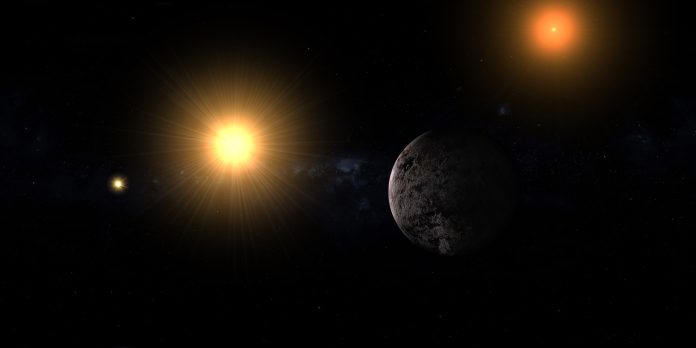Astronomers using NASA’s James Webb Space Telescope have uncovered new details about the atmosphere of an exoplanet known as WASP-39 b, located 700 light-years away from Earth
This distant world, roughly the size of Jupiter but with a mass similar to Saturn, orbits its parent star in such a way that one side always faces the star, while the other is in perpetual darkness.
The two hemispheres of WASP-39 b
This phenomenon, known as tidal locking, has led to extreme differences in temperature and atmospheric conditions between the planet’s eternal morning and evening regions.
Using Webb’s powerful NIRSpec (Near-Infrared Spectrograph), researchers have pinpointed a remarkable temperature gap between the two hemispheres of WASP-39 b.
The evening side, constantly exposed to the star’s radiation, sizzles at a searing 1,450 degrees Fahrenheit (800 degrees Celsius), while the morning side experiences a relatively cooler 1,150 degrees Fahrenheit (600 degrees Celsius). This stark contrast, equivalent to about 300 degrees Fahrenheit (200 degrees Celsius), highlights the dynamic nature of this distant world’s atmosphere.
Néstor Espinoza, lead author of the study and an exoplanet researcher at the Space Telescope Science Institute, remarked, “WASP-39 b has become a sort of benchmark planet in studying the atmosphere of exoplanets with Webb.
“It has an inflated, puffy atmosphere, so the signal coming from starlight filtered through the planet’s atmosphere is quite strong.”
James Webb Space Telescope’s capacity
The team’s breakthrough came from analysing the planet’s terminator, the boundary between its scorching dayside and frigid nightside. By scrutinising the 2- to 5-micron transmission spectra, astronomers were able to determine the temperature differences and also variations in cloud cover. The morning side appears to be cloudier compared to the clearer evening side, further complicating the planet’s atmospheric dynamics.
“It’s really stunning that we are able to parse this small difference out” Espinoza added. “It’s only possible due Webb’s sensitivity across near-infrared wavelengths and its extremely stable photometric sensors,”
Further investigation using sophisticated General Circulation Models revealed that prevailing winds on WASP-39 b play a crucial role in redistributing heat around the planet. Hot gases from the dayside stream towards the nightside, creating powerful equatorial jet streams that further exacerbate the temperature disparity between morning and evening.
“This analysis is also particularly interesting because you’re getting 3D information on the planet that you weren’t getting before,” added Espinoza. “Because we can tell that the evening edge is hotter, that means it’s a little puffier. So, theoretically, there is a small swell at the terminator approaching the nightside of the planet.”
The findings, published in Nature, mark a significant milestone in exoplanet research and demonstrate the James Webb Space Telescope’s capacity to solve the mysteries of planets beyond our solar system.











